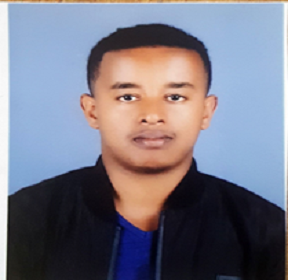Keynote Forum

Leon G Leanse
USATitle: Quinine enhances photo-inactivation of pathogens
Abstract:
With the rise in antimicrobial resistance, it is becoming increasingly difficult to successfully treat infections caused by an array of pathogens1. Over the past few years, antimicrobial blue light (aBL) has been emerging as an novel ‘drug-free’ approach to tackle multidrug-resistant (MDR) infections. [2]. aBL is a particularly attractive alternative to traditional antimicrobials, as a previous study demonstrated that resistance development to aBL by bacteria through serial exposure is highly unlikely [3]. The antimicrobial efficacy of aBL, however, is dependent on the infecting agent, with certain bacterial species being comparatively more tolerant of aBL-mediated killing than others [4]. Therefore, we investigated the combination of antimicrobial blue light (aBL) and quinine hydrochloride (Q-HCL) for enhanced inactivation of bacterial and fungal pathogens, in vitro and in vivo, relative to either monotherapy alone. Furthermore, we performed Raman spectroscopy to monitor uptake of Q-HCL into cells. In addition, we evaluated the safety of this combination therapy in vivo using the TUNEL assay. Combining aBL (27-108 J/cm2) with Q-HCL (0.125-1 mg/mL) resulted in a significant improvement in the inactivation of the Gram-negative bacterial pathogens, Pseudomonas aeruginosa and Acinetobacter baumannii, and the fungal pathogen: Candida albicans planktonic cells in vitro. Significant
synergy (>10(3)-fold potentiation) was observed when aBL was combined with Q-HCL, compared to either treatment alone (P<0.001). aBL+Q-HCL was also effective at inactivating biofilms more effectively than either therapy alone in all pathogens tested (P<0.001). Transmission electron microscopy of A. baumanii and C. albicans revealed that aBL+Q-HCL induced morphological and ultrastructural changes consistent with cell wall and cytoplasmic damage. In addition, in P. aeruginosa and A. baumanii, using single cell Raman spectroscopy we discovered that aBL enhanced the uptake of Q-HCL into cells. aBL+Q-HCL was additionally effective at eliminating P. aeruginosa and C. albicans within mouse abrasion wounds, with a 100-fold and 10-fold improvements in the elicited antimicrobial effects (P<0.001). Q-HCL alone did no influence the viability of P. aeruginosa or C. albicans in vivo. The TUNEL assay revealed no significant presence in apoptotic cells before and 24 hours following treatment with aBL+Q-HCL. The combination of aBL+Q-HCL was highly effective at eliminating both bacterial and fungal pathogens in vitro and in vivo. These findings therefore suggest aBL+Q-HCL may be a highly effective approach to treat infections irrespective of pathogen etiology.
Biography:
Dr. Leon G. Leanse is currently appointed as a research fellow at Harvard Medical School working within the Wellman Center for Photomedicine at Massachusetts General Hospital. He is a molecular microbiologist by training, with an MSc from the London School of Hygiene and Tropical Medicine and a PhD in molecular microbiology from Imperial College London. Dr. Leanse’s research is current is currently focused on synergistic light-antimicrobial interactions for the elimination of multidrug resistant localized infections.
Speakers

Hejer Harrabi
TunisiaTitle: Outbreak of Measles in Tunisian adults in 2019
Abstract:
Introduction- Measles is an acute viral illness. It is one of the most transmissible viral infections. From 1 January through 30 April 2019, the Tunisian Health Ministry responded to a large measles outbreak in the country. A total of 3 141 suspected cases, of which 909 (28.9%) were laboratory confirmed and 1 236 (39.4 %) epidemiologically linked cases including 30 deaths (case fatality ratio=1.0 %), have been reported in all of the 24 governorates.
Objective- The objective of our study is to report the cases of measles that were hospitalized in our department.
Methods and materials- We conducted a retrospective study (March-June 2019) in the department of infectious diseases at La Rabta University hospital in Tunis. All the adults (aged>15) with a suspected case of measles were hospitalized. The diagnosis was confirmed by positivity for IgM antibodies against measles virus and/or reverse-transcriptase polymerase chain reaction in blood in the laboratory of virology of Charles Nicolle university hospital.
Results- We report here 21 adult patients, with sex ratio of 1.1 (11/10). The mean age was 38 (29-58) years. The vaccination rate against measles was very low. Only 10% of the patients were vaccinated against this virus. The clinical features included fever, fatigue, cough, coryza, conjunctivitis and maculopapular rash. The diagnosis was confirmed in all the patients by positivity of IgM antibodies against measles (17 cases) and PCR (4 cases). All the patients were isolated, and the treatment was symptomatic. Pulmonary complication was reported in 9 cases (42.8%). One patient was hospitalized in the intensive care unit for respiratory failure. No case of death was reported.
Conclusion- Early diagnosis with subsequent isolation and registration of patients are important measures to prevent local outbreaks of the disease as well as immunization. The vaccine coverage in the general population should be as high as 95% to provide herd protection.
Biography:
Hejer Harrabi is Born in 20 June 1980, Kairouan,Tunisia; Single Medical Studies: University of Medicine Sfax, Tunisia; François Rabelais University of Tours, France; El Manar University Tunis, Tunisia Diploma: Doctor in medicine in 2009, specialist in infectious diseases in 2010, University diploma (U.D) “Vaccinology”, U.D of Washington University “ Clinical Management of HIV”, UD “Reanimation in infectious diseases”, U.D “Antibiotherapy”, U.D “Geriatric medicine”, U.D. “Medical pedagogy” Career: Referring doctor in infectious diseases and clinical researcher in the infectious diseases department, CHRU Tours, France (2009-2011); Public health doctor specialized in infectious diseases, CHU Ibn ElJazzar (2012-2014); University hospital assistant in the infectious diseases department, CHU La Rabta, El Manar University, Tunis (2014 - to now).

Stefania Lauzi
ItalyTitle: Feline morbillivirus and domestic cat hepadnavirus in cats from Northern Italy
Abstract:
Feline morbillivirus (FeMV) and domestic cat hepadnavirus (DCH) are emerging viruses in cats that were first described in Hong Kong in 2012 and in Australia in 2018, respectively. The epidemiological association of FeMV with chronic kidney disease (CKD) and of DCH with feline chronic hepatitis and hepatocellular carcinoma in cats have been suggested. The aims of this study were to investigate the presence and the genetic diversity of FeMV and DCH as well as the relationship between FeMV infection and CKD and DCH and hepatic disease in cats from Northern Italy. Urine and renal samples (no. 108), as well as 30 blood samples (no. 27) were collected from cats admitted to the Veterinary Teaching Hospital of the University of Milan between 2014 and 2019. Urine and kidney samples were tested for FeMV infection whereas blood samples were investigated for DCH infection. FeMV was detected in three samples (2.8%) from cats without evidence of CKD. Phylogenetic analysis showed that the three Italian FeMV strains clustered with the FeMV strains retrieved from public databases and formed a distinct sub-cluster of FeMV. DCH was detected in one blood sample (3.7%) from a cat with liver disorder, reflected by a high transaminase activity. The DCH strain clustered with DCH sequences retrieved from public databases. The presence of distinct genotypes of FeMV found in this study confirms the genetic diversity of FeMV strains that has been previously reported. The absence of a clear relationship between the presence of FeMV infection and CKD in the cats from Northern Italy is in accordance with recent reports that do not support the hypothesis that FeMV infection is associated with the development of CKD. Despite the presence of DCH in a cat with liver disorder, further investigations are needed to confirm the relationship of DCH with hepatic disease in cats.
Biography:
Stefania Lauzi is a Veterinarian, University Researcher of the Veterinary Medicine Department, University of Milan, Italy. Specialist in Animal health, breeding and production, in the field of Public Health and Infectious diseases of animals, her scientific and research activity focused on the epidemiology and molecular diagnostics of zoonoses and bacterial and viral veterinary infectious diseases such as bovine tuberculosis, bovine viral diarrhea virus, vector-borne pathogens, feline coronavirus, feline morbillivirus and colibacillosis. To date her studies and activities are also focused on the influence of the microbiome on animal diseases. She is author and co-author of several publications on national and international scientific peer-reviewed journals. She is also teacher of university courses on emerging zoonoses and infectious diseases in animals for Veterinary Medicine degree students and for post-graduate students at the University of Milan, Italy.

NEBIYU LER ALARO
EthiopiaTitle: Challenges faced by Healthcare providers in providing services to key population at risks of HIV in Ethiopia
Abstract:
As One Of The Main Goals Of The Partnership Framework (PF) Between The Government Of Ethiopia (GoE) And The U.S. Government (USG), Ethiopia Has Set A National Target Of Reducing New HIV Infections By 50% By The End Of 2014 (National Target). Funded By The USG, The PF Provides A Five-Year Joint Strategic Plan (2010-2014) For Cooperation To Support Ethiopia’s National HIV/AIDS Response (PEPFAR, 2010). Ethiopia Has An Estimated Adult Prevalence Of 1.5% And About A Million People Living With HIV/AIDS (PLWHA) (ECSA & IFC, 2012), Among Countries Most Affected By The Epidemic. The International Labor Organization (ILO) Projection For 2015 Indicates That As Much As 8.5% Of The Ethiopian Labor Force Loss Will Be Due To HIV/AIDS Deaths (World Learning, 2012). On The Other Hand, Since The PF Took Effect, USG Funding To The Program Has Been In Constant Decline. Moreover, The PF Does Not Fully Take Into Account Context And Development Barriers Due To The Prevailing Social, Political, Economic And Development Policies In The Country. Participation Of The Private Sector, Independent Civil Societies And Media In The Development Process Has Been Severely Curtailed. Contextual Factors Have Been Seriously Challenging The Prevention Of Mother-To-Child Transmissions (PMTCT) Efforts. Furthermore, The Country Lacks A Comprehensive Strategy To Fully Address The Issue Of Most-At-Risk Population (MARP) As Drivers Of The HIV Epidemic; And The HIV/AIDS Response Excludes Men Who Have Sex With Men (MSM), A “Significant Unacknowledged” But Fast Growing Transmission Route Of HIV (Tadele, 2008). Drawing from Literature Review and Practicum Experience in Ethiopia, This Paper Examines the Feasibility of Ethiopia’s National Target. The Main Problem In The HIV/AIDS Discourse In Ethiopia Appears To Be Behavioral Change, But Not Lack Of Knowledge. In Addition, Contrary To The Widespread Public Belief That Homosexuality Is Not Ethiopian, There Exists A Flourishing Underground Male-Sex Trade In Addis Ababa.
Biography:
Dr. Nebiyu Lera Alaro obtained his PhD in public health from Central University of Nicaragua (in academic partnership with Texila American University). He is an International Public Health Specialist with more than 10 years of experience in humanitarian affairs associated with Maternal, New born and Child Health (MNCH), Research, Project Monitoring and Evaluation, Health System Strengthening, Quality Assurance and Capacity Building, with teaching/mentoring experience for public health students, staff and volunteers. He worked for Doctors with Africa – CUAMM Lake state, South Sudan as Technical Project Manager where he was responsible for providing leadership and overall guidance in project planning, implementation and monitoring/evaluation including direct technical support; (training and mentoring) to staff, towards achieving effective participatory and sustainable implementation, of primary and secondary health care system at all levels. He presently works Health Support Organaization – THESO as Country Program Director, South Sudan. Dr. Nebiyu has been involved in many public health field works and operational researches. He has research publications on various medical and public health issues to his credit. He is known for commitment to excellence that is evident through all aspects of his work. He is innovative, demonstrates respect for others, passionate about his work and has a strong sense of accountability. His contributions have helped dramatically improve the reproductive health, child health, Expanded Program on Immunization (EPI), surveillance, prevention and treatment of Communicable and Non-Communicable Diseases (NCDs), health promotion, nutrition therapy program (as funded by USAID, HPF, WFP, UNICEF, Japan Plat fourm and Italian Cooperation funds) including evaluation system in South Sudan. The improvements reported in the external quality scores under his leadership have been simply dramatic. Importantly, Nebiyu is dedicated to mentoring students, interns, staff and volunteers.

ivana haluskova balter
ParisTitle: Immunity, resistance, microbiome and alternatives (vaccines) to tackle diseases and prevent health
Abstract:
Bacteria, viruses, parasites and fungi that are resistant to drug cause 700,000 death each year. By 2050 superbugs inured to treatments could cause up to 10 million deaths annually and costs the global economy US$100 trillion. AMR (antimicrobial) resistance is regarded nowadays as a major threat to global public health. The issue is receiving high-level political attention (G7 and G20 in 2017 for first time).Pandemics, drug resistance and neglected diseases framing health as a “global security issue”. as recent example of coronavirus and previously Ebola. The list was drawn up in a bid to guide and promote research and development (R&D) of new antibiotics, as part of WHO’s efforts for AMR but need to be extended. Tuberculosis (MDR/ XDR) and latent tuberculosis represent a major issue to tackle attracts global attention as witnessed by recent WHO and inter-ministerial meetings several times and figured on economic agenda given the fact of health importancy for sustanaible economic growth in this interdependent and aging world Problem of resistance get worsened due declining number of new antibiotics and limited number of new classes. Multifaceted strategy to promote and prioritize highly potential alternatives to tackle AMR like vaccines development is required. Vaccines like diphtheria and tetanus did not prompt resistance. In 1980 the smallpox vaccine had eradicated the naturally circulating virus worldwide without generating resistance. Recent development of LATV for pertussis shows positive off target effect where not only antibody but innate and cellular imunity plays role. Additionally, introduction of live vaccines like measles and BCG has been associated with much larger reduction of morality than can be explained by the prevention of the targeted infections Thoughtful and innovative vaccines development taking into account host microbiota “superorganism” and immune crosstalk - Immune system training linked with several inflammatory/autoimmune diseases open large avenue for future development. Accurate diagnostic and surveillance with better understanding of genetic and immunologic background of host specific response and pathogen evolution drives successful country adapted vaccine research. BUT, importantly, vaccines, as highly potent tool and valuable alternative from long term perspective being clearly recognized as a major tool for public health already. Collection of microbiome data as Oncobiome project or Metagenome (gut, nasal, reproductive organs, skin) and deeper understanding of interaction withing immune and neuroendocrine system along with adapted intervention considering personal, immune status and geographical differncies need to be considered and helpful for diagnostic, prevention and earlier intervention. There is a strong call for vaccine in infectious diseases area and neglected diseases (dengue, malaria - vector born diseases and climate) but also NCDs. Vaccins might bring strong valuable approach given protection of microbiome influenced by many factors -(nutrition, delivery, use of antibiotics) for non communicable diseses like in immunooncology, aging, obesity, diabetes etc. Especially in very young age (under 3 years old) where example of stunning and microbiome (nutrition) in afribiota study might be looked at. Futher strong support to promote them as highly potential tool and suppport for accelerated clinical development based on data (surveillance) need joint endorsement including regulatory and economic stakeholders along with necessary partnership at Global level.
Biography:
French Medical professional specialized in infectious diseases, internal medicine covering various therapeutic axes, certified in Immunology and Pediatric, MBA vaccinology and years of active clinical practice. Certified in Health and diplomacy (Geneve) Lived multi-country medical “field “experience in Southeast Asia (India in particular), West/Central/East Europe. Speaking French, English, Russian, Italian, Czech, Slovak with notion of Mandarin. Over 15 years of experience in senior position in various industry companies in research and development for European and USA for vaste and complexe international programs and therapeutic areas for adults and children including infectious and tropical diseases, vaccins, metabolic and CVS, neurodegenerative diseases,inflammation, onco/oncoimmunology and orphan indications.

Ethar Abdelmajeed Mohamed Imam
Saudi ArabiaTitle: Administration error of benzathine penicillin G in a Saudi male
Abstract:
Background Benzathine penicillin G is indicated for intramuscular (IM) administration. There have been reports of unintentional intravenous (IV) administration, which has been associated with cardiorespiratory arrest and death. This article reports on a case of inadvertent IV administration of benzathine penicillin G instead of IM injection. Clinical details A 29‐year‐old Saudi army male with no history of any chronic illness visited the Security Forces Hospital in Makkah because of injuries to his left hand and left ear as a result of a bomb blast. The patient underwent surgery, and was conscious, oriented and vitally stable after the operation. He was prescribed benzathine penicillin G to prevent wound infection, but the injection was incorrectly administered IV instead of IM. Outcomes The patient did not exhibit any visible clinical symptoms after receiving the drug via the wrong route. The patient's vital signs were fine and he did not have a fever. The full complete blood count was normal, except for a mild elevation in the neutrophil count (84%) and a mild decrease in lymphocytes (8.8%). Random blood glucose was 149 mg/dL and the activated partial thromboplastin time was 39.3 s. All other laboratory investigations were within the normal range. The creatinine concentration fluctuated between 0.8 and 1 mg/dL. Conclusion This was an obvious case of a drug‐related problem categorised as a ‘wrong route error’. The role of clinical pharmacists in preventing such errors is important to ensure patient safety.
Biography:
Ethar Imam is a senior clinical pharmacist and works with security forces hospital – Makkah SFHM Saudi Arabia. She holds Master degree in Clinical Pharmacy, and PhD, Khartoum University-Sudan. She is a senior clinical pharmacist infectious disease specialist, she has Antimicrobial Stewardship Certification (SIDP), and she is Institutional Review Board (IRB) member, Pharmacy and Therapeutic committee member and preceptor of Antimicrobial Stewardship, and lecturer. She has Teaching certificate for pharmacist, American society of hospital pharmacist (ASHP). Author of antimicrobial stewardship book at SFHM, Leader of training and education of antimicrobials for all health care providers at the hospital, She works in collaboration with Institute of Endemic Diseases, Sudan(WHO).

Mojtaba Mafi
Tehran university, School of Medicine IranTitle: Is "Megaloblastic Anemia", "Infectious"? What is tropical Sprue?
Abstract:
A 30 years old woman with resistant megaloblastic anemia, was referred to us for further diagnosis and investigation. According to peripheral blood smear, megaloblastic anemia had been diagnosed definitely with hypersegmented neutrophils and blood biochemistry revealed the severe serum Vitamin B12 deficiency and RBC, MCV was 115. The patient was pale and felt fatigue permanently and exact medical history showed that the patient's diet was desirable and she consumed all kinds of proteins and vitamins with sufficient meat, egg and vegetables intake .
It was the first sign of thinking about it is unusual case. In physical examination, we found muscle, bone tenderness and patient mentioned about her bone pain specially during night. Serum vitamin D level was very low and insufficient. We found osteoporosis based on bone densitometry and this was second sign convinced us that this case is bizarre, "a 30 years old woman with osteoporosis ."
We returned to medical history again and found the gastrointestinal manifestation, that at first seemed irrelevant with megaloblastic anemia or osteoporosis, but it was a clue to consider GI tract as anatomical localization. The patient had diarrhea within 10 years with remission and relapse.
Along with intermittent abdominal cramp, we rapidly requested D-Gsylose test and it revealed malabsorption definitely. The patient had weight loss about 10kg during 5 years and after weight loss, she was 50 kg. thyroid, renal and hepatic tests was normal. We found steatodiarrehea in stool exam, so malabsorption was clear for us. We ruled out chronic pancreatitis and celiac disease with normal serum level of lipase, amylase, anti gliadin antibody and anti endomysial antibody. In addition, we found vitamin K deficiency with multiple bruises on her skin and body. Hence, we convinced to study intestine due to invasive procedures, so that, we ordered enteroscopy with biopsy. Biopsy reports consists of presence of inflammatory cells with lymphocyte predominance. With diagnosis of intestinal inflammation, with severe malabsorption and rule out of other diseases or conditions, our diagnosis was tropical sprue, that is probably infectious and with adequate antibiotic therapy, all GI manifestations was removed and patient felt completely well. With vitamin replacement therapy, the blood smear was revealed normal pattern. So, after treatment with antibiotics and biopsy report, we convinced that the diagnosis was tropical sprue .
We dedicate biopsy report and histological pattern and antibiotic therapy regimen in detail at oral presentation time .
Thanks and regards .
Mojtaba Mafi, MD, Study director.
Fateme Rezvani, bioinformatics, study manager.
Biography:
Dr. Mojtaba Mafi M.D., Medical Doctor/ Physician, graduated from Tehran university, School of Medicine with honor. I studied in neurosurgery ward and graduated with A score with thesis on Meningioma Brain Tumor during 6 years. With continuing my practice with special consideration on psychosomatic disorders, I completed many post graduate courses on health psychology, addiction medicine, sexual disorders therapy successfully. I passed many post graduate courses in Neuro, approved by Medical sciences university. As well, I have been passed post graduate courses on Nutrition, Gastroenterology and hepatology, Obesity treatment and diabetes approved by Tehran University of Medical sciences. I successfully passed more than 10 programs with certificates and membership in Iranian Association of Gastroenterology and Hepatology.

Oumer Abdu Muhie
EthiopiaTitle: Causes and Clinical Profiles of Ascites at University of Gondar Hospital, Northwest Ethiopia: Institution-Based Cross-Sectional Study
Abstract:
Ascites is a common clinical condition encountered by physicians in day-to-day practice. It is caused by various underlying diseases. Knowing the etiologies is vital because further investigations and definitive treatment largely rely on the specific disease entity considered.
The aim of this study was to determine the epidemiology of causes of ascites and complications among patients with ascites from the medical department at the University of Gondar Hospital.
Data on sociodemography, major symptoms, and signs, risk factors, past medical illnesses, and results of important investigations were collected using pretested questionnaires among all patients with ascites in the University of Gondar Hospital in a sample size of 52. Data were collected by well-trained physicians and analyzed by using SPSS 16. Results were depicted descriptively with measures of central tendency, dispersion, and using tables and graphs.
A total of 52 patients were included in this study from November 1, 2018 to March 30, 2019. Thirty (57.7%) of them were males and the majority (77%) of the participants were fifty years old or younger. The mean age was 43.8 (±14). The majority (86.5%) of the participants were from a rural area. Thirty-eight (73%) patients take alcohol occasionally while 11(21.2%) patients take alcohol frequently or massively. Eight (15.4%) patients reported a history of multiple sexual partners. Herbal medicine use was reported by 28 patients (53.8%).Only 5 (9.6%) patients were overweight. Chronic liver disease (CLD) was the major cause of ascites in this study in 24 (46.2%) patients. The other main causes of ascites were heart failure from various causes (19.2%), tuberculosis and hepatosplenic schistosomiasis contributing to 11.5% each and chronic kidney disease (5.8%). Five (20.8%) CLD patients had spontaneous bacterial peritonitis as a complication. Five (20.8%) and 4 (16.7%) CLD patients had hepatocellular carcinoma and hepatic encephalopathy as complications, respectively. Nine (17.3%) patients had variceal bleeding; six of the patients were diagnosed to have CLD while the remaining patients were having hepatosplenic schistosomiasis.
In conclusion, liver cirrhosis is the major cause of ascites in Gondar, Ethiopia, while chronic viral hepatitis infections (hepatitis B (HBV) and C (HCV) viruses) are the main causes of liver cirrhosis. The other major causes included heart failure, tuberculosis, and hepatosplenic schistosomiasis. It is wise to consider and give priority to these diseases whenever one is evaluating a patient with ascites.
Biography:
Oumer Abdu Muhie is an Internist and Assistant professor of medicine by profession and works in one of the teaching tertiary hospitals in Ethiopia. He holds a doctor of medicine degree and certificate of the specialty training in internal medicine. Oumer has 5 years of public practice and 1year of private practices as a medical doctor and academician. He has also been involved in clinical researches in Ethiopia. He has attended a research course concerned in clinical research and evidence based decision making at the institute of tropical medicine held at Antwerp, Belgium. Oumer grew up in one of the remote villages of Ethiopia and is concerned about controlling infectious diseases and containing antibiotic resistance.

Jane John Mpapalika
Economic and Social Research Foundation TanzaniaTitle: The application of Artificial Intelligence in the diagnosis and treatment of malaria in Tanzania
Abstract:
Malaria is considered as a life-threatening disease caused by parasites that are transmitted to humans through the bites of infected female Anopheles mosquitoes. This epidemic disease poses a significant concern in sub-Saharan Africa particularly in Tanzania with high records of morbidity and mortality over the years. However, due to malaria control interventions, Tanzania has witnessed a major drop in the late 2000s. The main interventions included Long Lasting Insecticide Treated Nets (LLINs) and improved access and availability of quality assured Artemisinin-Based Combination Therapies (ACTs). Given the science and technology-based point-of-care innovations, Artificial Intelligence (AI) using Artificial Neural Networks (ANN) algorithm for detecting malaria under the microscope will give accurate, reliable and effective diagnosis and treatment of malaria than humans. The automated microscope, Autoscope, is almost 100 percent accurate and specific at detecting malaria parasites. The Autoscope employs deep learning software to analyze and quantify malaria parasites in microscopic images in a given sample. Deep-learning software uses artificial neural networks that emulate human brain to allow computers to recognize abstract patterns using visual features.
Data was collected through interviews. Interviews were conducted with health/social workers and practitioners in Dar es Salaam region using a semi-structured interview guide. Secondary data was sourced from annual reports and publications that are released by Muhimbili University of Health and Applied Sciences, Ifakara Health Institute (IHI), National Institute for Medical Research (NIMR), Centre for Chronic Disease Prevention and Control (CCDPC), Ministry of Health World Health Organization (WHO), CARE International and other institutions dealing with Malaria.
As a policy recommendation, digitally-enabled diagnosis and point-of-care treatment for malaria should be an increasingly priority to the government of Tanzania through the Ministry of Health. Best practises should be s used in improving the diagnosis and treatment of malaria which is consistent with Sustainable Development Goal 3: Ensure healthy lives and promote well-being for all at all ages highlighting that By 2030, end the epidemics of AIDS, tuberculosis, malaria and neglected tropical diseases and combat hepatitis, water-borne diseases and other communicable diseases.
Biography:
Dr. Jane Mpapalika is an economist by professional and a research Fellow at the Economic and Social Research Foundation (Think-Tank Institute) in Tanzania. I pursued M.A. Economics at Leeds University Business School in Leeds, UK and PhD in Economics at the University of Witwatersrand in Johannesburg, South Africa. Dr. Mpapalika has been working at ESRF for almost two years now. I was involved in a multi-year project in collaboration with Muhimbili National Hospital and University of Dar es Salaam under the Global Challenge Research Fund (GCRF/GAHSI) as a Co-Investigator for Tanzania.

Doreen Anna Mloka
Muhimbili University of Health and Allied Sciences (MUHAS) TanzaniaTitle: Medically important Fungi and Fluconazole resistant of Candida sp isolated from hospital cockroaches
Abstract:
Hospital care associated infections (HAI) are a major public health concern worldwide associated with high rates morbidity, mortality and health care costs. The World Health Organization (WHO) estimates that the prevalence of HAIs varies between 5.7% and 19.1% in low- and middle-income countries (1). The reduction of incidence and elimination of HAIs is impossible, with regular surveillance and effective infection control prevention (ICP) programs. Nevertheless, effective implementation of IPC measures in resource limited countries is a difficult, due to lack of resources and lack of basic facilities like access to clean running water (2).
Cockroaches are common pests of domestic pets of households, hospitals and industrial areas. They tend to live and hide in dark cracks and crevices of kitchens, toilets and food stores; as these are ideal environments in terms of temperature, humidity and sources of nutrition for them to flourish. Moreover, as hospital kitchens and toilets are areas are often contaminated with infectious microorganisms including bacteria, viruses, and protozoa, these areas may act as sources for contamination of cockroaches with pathogens associated with HAIs. Subsequently, free running cockroaches in the hospital environments may act as potential carriers, transmitters and reservoirs of infectious and drug resistant microorganisms associated with HAIs (3).
We thus embarked on a study to evaluate the mycological profile of cockroaches surfaces captured from the main Intensive care unit (ICU), burn unit, surgical and orthopedic wards, intern hostel kitchen and the central kitchen of a national referral teaching Hospital in Tanzania. Normal saline washings from the external surface of cockroaches were cultured on standard mycological media to facilitate isolation and identification of medically important molds and yeasts. Susceptibility to fluconazole was tested using the CLSI M27-A3 microdilution method. A total of 213 cockroaches were captured from various sites of the hospital between February and March 2018. All cockroaches captured were shown to carry medically importance fungi. A total of 956 medically important fungi were isolated, 57.5 % were Candida sp., 21.2%, Aspergillus sp., 3.6% Cladosporium sp., 2.1% Rhizopus sp., 1.4 % Geotrichum sp., 0.9 % Pencillum sp. , 1.7% Alternaria sp, 0.6 % Fusarium sp , 0.3% Mucor sp and 10.1% others. Aspergillus fumigatus (50.0%) was the most commonly isolated species followed by Aspergillus niger (15.8%) among the Aspergillus isolates. Over 16.3 % of the Candida isolates not intrinsically resistant to fluconazole showed resistance to this drug. Resistance was most frequently found in Candida pseudotropicalis (23.8%) and Candida glabarata (20.0%) and least in isolates of Candida albicans ( 6.3%). The study concluded that the external surfaces of cockroaches from this hospital may act as reservoirs of medically important opportunistic fungi exhibiting resistance to fluconazole. Moreover that hospital enhance its fumigation and IPC practices to prevent the transmission of drug resistant opportunistic fungi found on the surfaces of hospital cockroaches .
Biography:
Doreen Anna Mloka is a medical microbiologist by profession, she is also a senior lecturer in the School of Pharmacy, University Curriculum Chair and Director of Continuing education and Professional Development, at the Muhimbili University of Health and Allied Sciences (MUHAS) , Dar es Salaam, Tanzania. She holds a PhD in Medical Microbiology and a fellowship in medical Education. She has broad background in Microbiology and molecular biology, with specific training and expertise in PCR, drug resistance testing including for HIV .

Atsbeha Gebreegziabxier Weldemariam
Universitat Rovira I Virgili, Spain EthiopiaTitle: Nationwide Seroprevalence of Hepatitis B Virus Infection in Ethiopia: A Population- Based cross-sectional Study
Abstract:
Background: Hepatitis B virus (HBV) infection is a major cause of morbidity and mortality globally. In Ethiopia, there is a paucity of nationwide HBV sero-prevalence. The aim of this study is to assess sero-prevalence of HBV infection and identify associated risk factors in the country.
Methods: A population-based cross-sectional study was conducted from stored serum samples of the nationwide Non-communicable Diseases (NCDs) step-wise survey among people aged 15-69 years in all geographical areas in the country. A mix of sampling approach (stratified, three-stage cluster sampling, simple random sampling and Kish method) was used to select the study settings and the study participants.
Findings: There were a total of 7789 study participants: 26.4% were from urban areas and 59.5 % were females. The nationwide sero-prevalence of HBsAg was 9.4% (95% CI, 8.3-10.7) with significant regional variation having its highest burden in Afar Regional State (28.8% (95% CI 21.2-37.8) and lowest in Harari Regional State 4.9% (95% CI, 2.0-11.8).
This national study revealed significantly, higher prevalence of anti-HBsAg in males compared to females [10.3% vs 8.4%; p=0.004].
Conclusion: The findings of this study showed high endemicity level of HBV infection in Ethiopia, calling for strengthened HBV infection prevention, care and treatment services.
Keywords: Hepatitis B Virus, HBsAg, HBV Seroprevalence, Population Based Study, Ethiopia.
Biography:
Atsbeha Gebreegziabxier Weldemariam is a Nanoscience by profession and He complete his MSc in Nanoscience and Nanotechnology, Universitat Rovira I Virgili, Spain. Currently He works in Ethiopian Public Health Institute, Ethiopia for Ten years which involved as a researcher in clinical and biomedical research and Nanomedicine research (focused on infectious diseases including HIV, TB, and HBV/HCV) and as a public health professional coordinating and participating in national HIV and HIV/TB survey and surveillance, and in evaluating national programs related to HIV, HIV/TB and HCV/HBV. He has published scientific articles in peer-reviewed journals and more than 16 training awards in USA, Europe, Japan, Africa etc. Travel experience in Europe, USA, Japan, and Africa.

Dawit Kumilachew Yimenu
EthiopiaTitle: Assessment of Antibiotic Prescribing Patterns at Outpatient Pharmacy Using World Health Organization Prescribing Indicators
Abstract:
Overuse of antibiotics is a common problem in health care, which leads to unnecessary expenditure on drugs, raised risk of adverse reactions, and the development of antimicrobial resistance. Inappropriate prescribing habits lead to ineffective and unsafe treatment, worsening of disease and increment of health care costs. This study assessed antibiotic prescribing patterns using World Health Organization prescribing indicators at the outpatient pharmacy department of University of Gondar referral hospital, Gondar, Northwest Ethiopia. The study was conducted using a retrospective cross-sectional method. One-year prescription data was collected from prescription and prescription registration books retained at the pharmacy store. World Health Organization/International Network of Rational Use of Drugs prescribing indicators were utilized to measure rational use of drugs with due focus on antibiotics prescribing patterns. The collected data was analyzed using SPSS version 20. A total of 968 drugs were prescribed from 600 patient encounters. The average number of drugs per encounter was 1.6. The percentage of encounters in which an antibiotics and injections were prescribed was 69.7% and 6.3% respectively. Amoxicillin (28.5%) followed by ciprofloxacin (12%) and metronidazole(11.1%) were the most commonly prescribed antibiotics. The percentage of drugs prescribed from essential drugs list and by generic name was 95.3% and 96%, respectively. Rate of antibiotics prescribing showed deviation from the standard recommended by World Health Organization whereas polypharmacy, injectable prescribing pattern, uses of brand names, and prescription of drugs from the National Essential Drugs List were not found to be a significant problem though there were slight deviations from the standard.
Biography:
Dawit Kumilachew Yimenu is A pharmacist by profession. He has a bachelor’s degree in pharmacy and a master’s degree in pharmaceutical supply chain management. He is currently working as a lecturer at department of pharmaceutics and social pharmacy, school of pharmacy, university of Gondar. Aside from his professional duty as a lecturer, Dawit is a devoted researcher currently having five researches published in international journals with other three to be soon published. Dawit has participated in many professional trainings and workshops.
Keynote Forum

NARJISS AKERZOUL
MoroccoTitle: Trends in Epstein-Barr Virus and Burkitt Lymphoma
Abstract:
Burkitt's lymphoma is a rare form of malignant non-Hodgkin lymphoma mature B cells. In Europe and North America, representing about half of non-Hodgkin lymphomas in children and about 2% of those in adults. Indeed, two incidence peaks exist: the first is in childhood / adolescence / early adulthood and the second after 40 years.
Male individuals are preferentially affected. Patients infected with the HIV virus and that the antiviral therapy is not optimal are particularly susceptible to developing Burkitt's lymphoma. Two forms exist: one is called "endemic" (sub tropical Africa) and linked to the Epstein Barr Virus (EBV). Diagnosis is based on biopsy of a mass or puncture of an effusion or bone marrow revealing the presence of tumor cells. The staging is performed using imaging (mainly ultrasound and scanner). Differential diagnosis includes other forms of child abdominal tumors (such as Wilms' tumor and neuroblastoma. The management should be done in a specialized center in oncology / hematology. The treatment is based on chemotherapy which is some months but intensive. Our clinical observation reports the case of a girl aged 13 who presented with severe oral manifestations budding Burkitt lymphoma having evolved after 2 years of treatment.
Keywords: Epstein-Barr Virus, Burkitt Lymphoma, Children, Malignant Non Hodgkin Lymphoma.
Biography:
She is a Fellow Oral Surgery department, C.C.D.T, Faculty of dentistry,University Mohamed V Suissi,Rabat, Morocco. 2002-2005 : Baccalaureat Experimental Sciences, Mention : Very good. 2005-2011 : Doctorate of Dental Surgery (DDS), Faculty of Dentistry of Rabat, Mohammed V University, Morocco 2011-2012 : General pratitionner Dentist in Oral Health Center of Guelmim City, Morocco January 2013-July 2017 : Resident Oral Surgeon in the Center of Consultation of Dental Treatments of Rabat, Faculty of Dentistry of Rabat, Mohammed V University, Morocco 2013-Present: International Speaker (Oral speaker and Keynote Speaker) in different meetings of Oral Surgery and Head & Neck Oncology in Europe and the USA.

Bruno Kolb
GermanyTitle: Metabolic Profiling of Borrelia in Ticks and in Whole Blood Samples by Headspace Gas Chromatography - A Case Report
Abstract:
The technique of static headspace gas chromatography (HS-GC) was applied to monitor the emission of hydrogen and carbon dioxide from bacterial cultures to detect bacterial contamination in ticks and the transfer to humans, causing Lyme borreliosis. While the standard serological methods to recognize Lyme-disease rely upon the indirect determination of antibodies, the present method enables the direct proof of bacteria both in ticks and in the blood of infected patients, due to the specific hydrogen emission.The most efficient natural antibiotics found were oil of cloves and garlic extract preparations. It was found that the duration of a successful therapy with chemical and natural antibiotics varied but can be perfectly monitored by the gas chromatographic technique.
The technique of static headspace gas chromatography (HS-GC) was applied to monitor the emission of hydrogen and carbon dioxide from bacterial cultures to detect bacterial contamination in ticks and the transfer to humans, causing Lyme borreliosis.This method was also used to compare the efficacy of chemical and natural antibiotics. The most efficient natural antibiotics found were oil of cloves and garlic extract preparations. It was found that the duration of a successful therapy with chemical and natural antibiotics varied but can be perfectly monitored by
the gas chromatographic technique.
Introduction:
Bacteria emit volatile compounds, which are amenable to analysis by static headspace gas chromatography (HS-GC) if cultured in nutrient medium in the septum vials used for HS-GC. The technique of HS-GC has been applied since 1965 in examining the growth of bacteria in milk. Gas chromatography is a well-established technique for automated qualitative and quantitative analysis of volatiles. In addition to the analysis of VOCs released from bacteria, both hydrogen (H2) and carbon dioxide (CO2) are highly informative metabolites. Obligate aerobes produce CO2and water, while facultative anaerobes and microaerophilic anaerobes emit H2 and CO2 together with some other organic compounds, for example ethanol. Tick-borne diseases are difficult to recognize since they often arise late after Borrelia infection and comprise a wide range of various Lyme disease symptoms, such as Lyme arthritis, myalgias, heart abnormalities, chronic fatigue, neuropsychiatric depression and several more. In some areas up to 25% of ticks contain Borrelia bacteria and from these only few percent are also supposed to cause infection. Borrelia are microaerophile and can thrive in an atmosphere with a reduced oxygen concentration compared to air. A simple and easy to handle technique is therefore highly desirable for monitoring the presence of bacteria in the blood of an infected patient and to control the efficacy of an antibiotic therapy. The method of HS-GC proposed in this study may meet this requirement in an excellent way. Lyme-disease, however, may not always be
caused by Borrelia burgdorferi alone, but often by co-infection with subspecies of Borrelia (B. afzellii, B. garinii, B. spielmanii) or by other accompanying facultative bacteria such as Mycoplasma and Yersinia and some more. Our GC-technique can only prove the presence of hydrogen-emitting facultative anaerobic bacteria and not a single species such as Borrelia burgdorferi and for this reason we prefer the term Borreliella as common genus, suggested by S.J. Cutler et al.
Materials and Methods:
Materials and instrumentation Gas chromatograph GC-AK 11, Aug. Hedinger GmbH & Co KG, Germany; GC-column: 0.8 m x 6 mm polyamide tube, Silica gel 60/80 mesh; headspace vials: 6 ml from Perkin Elmer crimp-capped with PTFE-laminated butyl rubber septa. Nutrient medium: Merck Life Science GmbH, Germany, tryptic soy broth acc EP+ USP 3080r-20p; composition: pancreatic digest of casein, 17g; papaic digest of soya bean meal, 3g; sodium chloride, 5g; dipotassium hydrogen phosphate, 2.5g; glucose monohydrate. Sugar coated tablets with pulverized garlic Kwai©forte 300mg: Cassella-med GmbH & Co.KG,
Germany.
Results:
i) evaluation of the effectiveness of antibiotic treatment and
ii) supporting the search for effective antimicrobial compounds. Figure 1-Ab shows the comparison of two common antibiotics regarding their antimicrobial activity. Penicillin was found to be ineffective, while doxycycline, the standard antibiotic for Lyme borreliosis worked sufficiently well by complete disappearance of the characteristic hydrogen emission peak (Figure. 1-Ab). In further experiments, three ticks were crushed and incubated in 100 μl of the sample-free nutrient medium, thereby assuming that at least one of them was contaminated. Aliquots of such a homogenous suspension were transferred into the nutrient medium in the vials containing the antibiotics to be examined.
Biography:
Student Research Centre, Überlingen, Obertorstrasse, Germany.
Speakers

Priyatam Khadka
NepalTitle: Characterization of adverse effects and it’s associations in the patient medicated with anti-tubercular drugs
Abstract:
Background
Adverse effects from long-term therapeutic intervention in tuberculosis is obvious; however, were taken nonchalantly due to the only therapeutic alternative. The objective of this study was to characterize the adverse effects and it’s associations in the patient medicated with anti-tubercular drugs.
Methods
A longitudinal prospective study was conducted among the patient medicated with anti-tubercular drugs. As per the guideline of Nepal’s National tuberculosis control programme (NTP), Nepal, the treatment category was selected, fixed-dose-regimen was calculated, and treatment outcome was affirmed. Patients’ demographics and other clinical details were extracted from the repository files. Upon a consecutive follow-up, observed adverse effects were noted and multivariate logistic analysis against independent factors was done for elucidating any association.
Result
Of 177 cases enrolled, 138(77.9%) reported at least two adverse effects. In our multivariate logistic analysis: female, abnormal body mass index (BMI) i.e. underweight and overweight cases, patients’ behaviours i.e. smoking/drinking or both, clinical diagnosed cases and intensive treatment phase were independently associated with adverse side effects. Loss of appetite (85.4%) was the commonest while dermatologic manifestations (1.2%) and severe weight-loss (1.2%) were the least observed side-effects among the patient medicated with anti-tubercular drugs. Absolute drug-induced-toxicity was observed in treatment failure or MDR (multi-drug-resistant) subjects.
Conclusion
Adverse effects from anti-tubercular therapy are associated with patients’ demographics variables. Symptomatic treatment, regular follow-up after implicated therapy, and therapeutic-discontinuation may be required for successful cases.
Biography:
Priyatam khadka is a young, ebullient laboratory scientist; passionate on clinical microbiology, cell biology and cancer cell research; looking for a PhD. opportunity in the relevant topics of tropical and infectious disease, cancer cell and immune-therapy. Academically, he completed his Postgraduate in Medical Microbiology with a sound academic background. Currently, has been working as Medical Laboratory Professional in Tribhuvan University Teaching Hospital, Institute of Medicine, and Nepal for last 6 years and extra 3 yrs on other Health research institutes.

Princess Alexandra B Duque-David
PhilippinesTitle: The Clincico – Epidemiologic profile and the correlation of nutrition and immunization status with outcome of Measles patients during an outbreak
Abstract:
Objectives: To describe the demographic and clinical profile of pediatric patients diagnosed with measles during the recent measles outbreak in a tertiary hospital in Central Luzon, Philippines; and to investigate the relationship of nutrition and measles immunization status with the outcomes of measles infection
Methods: Cross sectional analytic study.
Setting: Tertiary training government hospital in Pampanga.
Participants: Patients less than 19 years old, admitted between January to April 2019; manifested the following criteria for suspected measles: fever, generalized maculopapular rash, cough, coryza, conjunctivitis.
Main Outcome Measure: Descriptive statistics was used to present data for the clinico-demographic profile of patients. Correlation study was done by determining statistical significance of the relationship of nutrition and vaccination status with measles complications and outcomes; and the relationship of major complications with outcomes of patients.
Results: A total of 373 patients were included in this study, 60% were males and 40% were females. Majority were under 0-6 months (40%). Most cases came from Pampanga (89.2%). Three Hundred fifty five (95%) were classified as clinically compatible measles and seven (2%) were laboratory confirmed cases and all had Measles IgM antibodies. Most of the cases manifested the classic symptoms of measles: fever 100%, rashes 99%, cough 96%, colds 84%, conjunctivitis 55% while Koplik’s spots was seen in only 13% of cases. As to exposure, those with exposure (49%) and without exposure (51%) are almost the same. Majority of the patients (76%) had no measles vaccine and the top reason for non-immunization is the issue on the patients being too young for vaccination. Majority had normal nutritional status (72.4%). Three Hundred Twelve reported the occurrence of clinical complications in patients with measles. Pneumonia was seen in 75% of cases and 9.3% had diarrhea. The occurrence of diarrhea is not directly correlated (p-value=0.823) with the outcome of measles while Pneumonia shows significant correlation with outcome of measles (p-value<0.001). Death was seen among patients with pneumonia. The occurrence of pneumonia is not significantly correlated with nutritional status (p-value=0.083) while diarrhea is significantly correlated with nutritional status (p-value=0.027). Two hundred forty eight patients with normal nutritional status did not develop diarrhea. Vaccination status shows significant correlation with occurrence of pneumonia (p-value=0.001). Out of the 285 non-vaccinated cases, 223 developed pneumonia. Vaccination status did not show significant correlation with occurrence of diarrhea (p-value=0.946). Nutritional status and vaccination status was not significantly correlated with measles outcome(p-value=0.605 and 0.120). In terms of outcomes, 90% of the patients were discharged while10% of the patients died.
Conclusion: Most were males, aged 0 to 6 months. There were clustering of cases in Pampanga. Majority were classified as clinically compatible measles. The most common complication seen was pneumonia. About half had exposure to measles. Majority had no measles immunization and the most common reason for failure for immunization is young age of patients during the time of vaccination. The presence of diarrhea is significantly related with nutritional status. Pneumonia is significantly correlated with vaccination status and outcome of measles. Most were discharged well improved.
Keywords: Measles, Outbreak, Pneumonia.
Biography:
Princess Alexandra B. Duque-David completed Doctor of Medicine at the age of 24 years at Far Eastern University- NRMF, Quezon City, Philippines. Recently, completed her residency training in Pediatrics at Jose B. Lingad Memorial Regional Hospital, Pampanga, Philippines.

El Hadji Seydou MBAYE
SenegalTitle: Human Papillomavirus Infection in genital Women in four regions of Senegal
Abstract:
Cervical cancer is the most frequent cancer among women in Senegal. However, there are few data concerning the HPV types inducing neoplasia and cervical cancers and their prevalence, in the general population of Senegal. The aim of this study is to determine the prevalence of HPV infection in Senegalese women aged from 18 years and older. A study was performed on 498 cervix samples collected from healthy women aged 18 and older in Dakar. 438 other samples were collected from three other regions, Thiès, Saint Louis and Louga. The samples were screened for 21 HPV genotypes using an HPV type-specific E7 PCR bead-based multiplex genotyping assay (TS-MPG) which is a laboratory-developed method for the detection of HPV. The prevalence for pHR/HR-HPV in the region of Dakar was 20.68%. HPV 52 (3.21%) was the most prevalent HPV type, followed by HPV 16 (3.01%) and HPV 31 (3.01%). In the regions of Thiès, Louga and Saint Louis, the prevalence for pHR/HR-HPV was 29.19%, 23.15% and 20%, respectively. The study revealed the specificity of the HR-HPV prevalence in Dakar and other regions of Senegal. The patterns differ from the one observed in the other regions of the world and raise the issue of the development of vaccination program in the country. Such a program should take into account the real HPV prevalence for an effective protection of HPV-associated diseases.
Biography:
Dr. El Hadji Seydou Mbaye was born in 1978 in Kaolack a region of Senegal. During 2008-2013, he earned his PhD in Biology and Human Pathologies with the collaboration of the International Agency for Research on Cancer (IARC) /WHO, Lyon (France); He has Masters of Life and Health, Specialty Biology of microorganisms, Immuno-physiopathology; Virology; a License of Biochemistry in Louis Pasteur University of Strasbourg (France); and a General Degree in Sciences and Technologies in University of METZ (France). He was certified Grade 10/10 by the FIGO, the Accreditation Council of Oncology in Europe (ICO), the Institute Catalan of Oncology. Recognized as Physician’s Recognition Award by the American Medical Association, he was certified, by the United Nations, by IARC/WHO. He has published 1 Book with a style of philosophical story. Author of the world program against cancer in low and middle incomes countries, he is lead author of more than 90 peer-reviewed research articles published in reputed journals. He is Editorial Board Member of 75 international Journals, Editor in Chief of 2 journals, associate membership of the World Society for Virology and also, member of BCNet International Working Group, IARC/WHO. Dr. MBAYE has formed for free, more than 250 healthcare professionals for the techniques of cervical cancer screening in Senegal.

Jemal Hassen Ali
EthiopiaTitle: Time to HIV viral load suppression and its associated factors in cohort of patients taking antiretroviral treatment in East Shewa zone, Oromiya, Ethiopia, 2018
Abstract:
Human immunodeficiency virus (HIV) is a virus transmitted through different body fluids such as blood and semen (2). United nation set goal to ending the AIDS epidemic by 2030 as part of the sustainable development goals (SDG)(3,4) Sustainable development goals set target in which: By 2020, 90% of all people living with HIV will know their HIV status, 90% of all people with diagnosed HIV infection will receive sustained antiretroviral therapy and 90% of all people receiving antiretroviral therapy will have viral suppression. When this goal is achieved, it is believed that at least 73% of all people living with HIV worldwide will be virally suppressed (5,6). Determination of Viral load in the patient plasma is the most important indicator of response to ART. The objective of this study was to determine the time to virological suppression and its associated factors among people living with HIV taking antiretroviral treatments in East Shewa zone, Oromiya, Ethiopia, 2018. Patients diagnosed with Human Immunodeficiency Virus presenting to the study health centers between October 3, 2011 and March 1, 2013 were included in the study Retrospective cohort study design was used to conduct the study. In this study, 243 study participants who have baseline HIV viral load measurement were included in the study. The study used secondary data from a long-running community-recruited prospective cohort of patients living with HIV. HIV Plasma Viral load measurement was taken at enrollment of patient to the study (Baseline), and then after the first month, third month, six months and twelve months and eighteen months of ART treatment. Significance group comparison was done by Kaplan Meier log-rank test. Cox proportional hazard model was used to select significant factors to the variability between groups. Plasma viral load was suppressed below the detection level in 72% of individuals taking a different regimen of ART. The median Human Immunodeficiency virus (HIV)-1 plasma viral load in the cohort was estimated to be log5.3111 copies/ml. The study observed Survival curve difference in the category of marital status (p-value 0.023) and CD4 value (p-value 0.023). The estimated median time to Plasma Viral Load (PVL) suppression was 181 days (CI: 140.5–221.4) with the age group of 30–39 years having minimum time to achieve suppression with 92 days (CI: 60.1–123.8) and the maximum time required to reach the level was found among the age group between 50 and 59 years. The study found that the estimated time to achieve PVL after taking ART to be 181 days. Factors affecting time to suppression level were marital status and baseline CD4.
Biography:
Jemal Hassen Ali is Medical Laboratory technologist by profession. He Masters of Public Health in Field Epidemiology laboratory track supported by CDC-Ethiopia. He has 10 years of work experience as laboratory technologist and one years of experience as Field Epidemiologist. Due to current issue of 90-90-90, He has presented his finding at US Embassy, Ethiopia with coordination of CDC-Ethiopia and PEPFAR. In the years he worked as technologist, he participated in different areas of specialties including experience in provide training for health professionals working in primary health care across the country, conduct supportive supervision in zonal, Hospital and health centers. He has also working experience in clinical and public health laboratory diagnosis in areas of TB (liquid and solid) culture, clinical microbiology, Immuno-heamatology and food and water quality test. He is currently working as coordinator for public health laboratory, Adama public health rsearch and referral laboratory service, Adama, Oromiya, Ethiopia.

Freda Loy Aceng
UgandaTitle: Importance of Public Health Surveillance Data in Describing Infectious Disease Trends: A view of Leprosy in Uganda
Abstract:
Public Health Surveillance is the systematic ongoing collection, analysis and dissemination of health related data to provide information which can be used to monitor and improve the health of populations. The components of public health surveillance are ongoing data collection, regular and frequent data analysis and the provision of the results of these analyses to those who need to know. Public health surveillance data is critical to the identification of infectious disease trends including spatial distribution and temporal trends. This presentation focuses on Leprosy and how we used surveillance data to describe infectious disease trends.
Leprosy is a neglected disease that poses a significant challenge to public health in Uganda. The disease is endemic in Uganda, with 40% of the districts in the country affected in 2016, when 42 out of 112 districts notified the National Tuberculosis and Leprosy Program (NTLP) of at least one case of leprosy. We determined the spatial and temporal trends of leprosy in Uganda during 2012-2016 to inform control measures. We analyzed quarterly leprosy case-finding data, reported from districts to the Uganda National Leprosy Surveillance system (managed by NTLP) during 2012-2016. We calculated new case detection by reporting district and administrative regions of treatment during this period. New case detection was defined as new leprosy cases diagnosed[3] by the Uganda health services divided by regional population; population estimates were based on 2014 census data. We used logistic regression analysis in Epi-Info version 7.2.0 to determine temporal trends. Population estimates were based on 2014 census data. We used QGIS software to draw choropleth maps showing leprosy case detection rates, assumed to approximate the new case detection rates, per 100,000 population.
During 2012-2016, there was 7% annual decrease in reported leprosy cases in Uganda each year (p=0.0001), largely driven by declines in the eastern (14%/year, p=0.0008) and central (11%/year, p=0.03) regions. Declines in reported cases in the western (9%/year, p=0.12) and northern (4%/year, p=0.16) regions were not significant. The combined new case detection rates from 2012-2016 for the ten most-affected districts showed that 70% were from the northern
region, 20% from the eastern, 10% from the western and 10% from the central regions.
There was a decreasing trend in leprosy new case detection in Uganda during 2012-2016; however, the declining trends were not consistent in all regions. The Northern region consistently identified more leprosy cases compared to the other regions. We recommend evaluation of the leprosy surveillance system to ascertain the leprosy situation.
Biography:
Dr. Freda Loy Aceng is a Veterinarian strongly interested in Infectious Diseases Management. She has a Bachelor’s degree in Veterinary Medicine from Makerere University and a Master’s degree in International Infectious Diseases Management from Makerere University and North Dakota State University. She is currently a Senior Epidemiologist at the Uganda Ministry of Health, Department of Integrated Epidemiology, Surveillance and Public Health Emergencies. She has investigated multiple disease outbreaks most notably ‘Cutaneous anthrax outbreak in Arua district, Uganda.’ Her work involves weekly analysis of public health surveillance data, publication of a weekly Epi-bulletin, preparedness, investigation and response to public health emergencies.

Sladjana Pavic
SerbiaTitle: Epidemiological, clinical and laboratory aspects of epidemic caused by Trichinella britovi in western Serbia
Abstract:
Objectives: The presence of Trichinella britovi in Serbia has been documented among animals only. This paper presents the large trichinellosis outbreak due to infected, uninspected wild boar meat consumption. It took place in the western part of Serbia, Zlatibor District, during the winter 2015-2016. Molecular Trichinella species identification enabled the first T. britovi outbreak recognition in Serbia.
Patients and methods: In the second half of January 2016, the Department of Infectious Diseases in Uzice examined 111 persons with clinical and laboratory signs of trichinellosis out of whom 19 patients were hospitalized. Trichinella species identification was performed by multiplex PCR. Sero-diagnosis was done by immunofluorescence antibody assay, indirect ELISA and Western Blot as confirmatory test.
Results: Patients mayor symptoms included: myalgia (83%), weakness (82%), pain in joints (80%), fever (77%), facial edema (74%), and diarrhea (23%). Eosinophil levels of > 500/ μl were found in 98% of patients, with a maximum value of 37200/ μl detected in two patients. Elevated levels of CPK were detected in 71%, LDH in 75% of patients. Two patients had cardiac complications: myocarditis, heart attack. The patients were treated with mebendasole, nonsteroid anti-inflammatory drugs and corticosteroids. The presence of anti-Trichinella antibodies was found in 86 (89,7 %) out of total 96 patients who provided a blood sample during the two months from the disease onset, including those hospitaly treated in whom 100% of sera positivity was detected one year later.
Conclusions: This outbreak indicated serious failures in education of all participants, from the hunters to consumers. The increase of awareness and knowledge of trichinellosis provoked by game meat and how to prevent it should be introduced. Also, this is to emphasize the importance of Trichinella species detection in aim of correct outbreak recording. When trichinellosis is suspected according to clinical signs and food exposure history, specific antibody detection could help timely diagnosis and treatment.
Biography:
Sladjana Pavic has been a specialist in infectious and tropical diseases and a master's degree in immunology since 2001. She has been employed at the Department of Infectious and Tropical Diseases of Uzice General Hospital since 1995, and since 2009 has been the department head. It is the only infectious disease treatment unit in the county with over 300,000 residents. During her many years of work, she has gained extensive experience in the diagnosis and treatment of patients with infectious diseases, as a ward doctor and as a consultant in other wards. Sladjana Pavic is Chairman of the Ethics Committee of the Uzice Health Center, President of the Commission for Intrahospital Infections of Uzice General Hospital, Member of the Medicines Commission of Uzice General Hospital and member of the Uzice Health Center Council. She has participated in many domestic and international professional gatherings.

